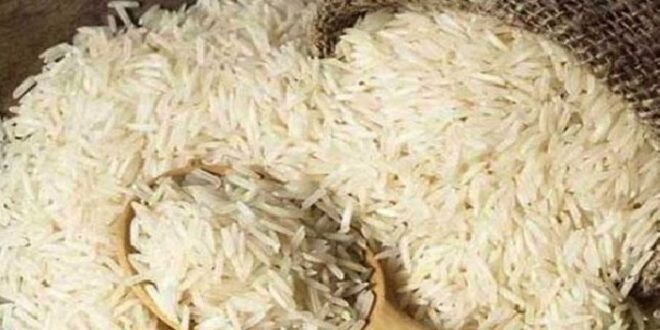13-06-2025
Bureau Report
NEW DELHI/ MUMBAI: India’s rice stocks in government warehouses rose 18% from a year ago to a record high for the start of June, while wheat stocks have hit their highest level in four years on higher procurement from farmers, official data showed on Wednesday.
Record rice stocks will help the world’s biggest exporter increase shipments, while an improvement in wheat inventories will help the federal government tame any price spikes later this year by increasing open market sales.
 State reserves of rice, including un-milled paddy, totaled a record 59.5 million metric tons as of June 1, far exceeding the government’s target of 13.5 million tons for July 1.
State reserves of rice, including un-milled paddy, totaled a record 59.5 million metric tons as of June 1, far exceeding the government’s target of 13.5 million tons for July 1.
Wheat stocks stood at 36.9 million tons on June 1, well above the government’s target of 27.6 million tons, the data showed.
“Rice stocks have piled up way too much. The government really needs to bring them down before the next buying season kicks off in October,” said a New Delhi-based dealer at a global trading firm.
India, which accounts for around 40% of global rice exports, removed the last of its export curbs on the grain in March 2025, with the initial restrictions having been imposed in 2022.
Wheat stocks have risen to a comfortable position mainly because of higher procurement, which will help New Delhi sell more wheat to bulk consumers during the lean supply season, said a Mumbai-based dealer.
The government has so far brought 30 million tons of wheat from farmers, the most in four years, according to data compiled by Food Corporation of India (FCI).
Disappointing harvests in the past three years and lower purchases by the FCI had pushed up prices of the staple grain and raised expectations that India may be forced to import wheat for the first time in seven years but the buildup in stocks this year means the country should be able to meet domestic demand without imports.
 Last month, a strong wheat harvest in India is rapidly replenishing stocks, meaning the country will be able to meet domestic demand without imports this year, contrary to market talk that it would need overseas supplies, and a potential drag on global prices.
Last month, a strong wheat harvest in India is rapidly replenishing stocks, meaning the country will be able to meet domestic demand without imports this year, contrary to market talk that it would need overseas supplies, and a potential drag on global prices.
India banned exports of the staple in 2022 and extended the prohibition as extreme heat shriveled crops again in 2023 and 2024, draining reserves, pushing prices to record highs and fueling speculation it would need imports for the first time since 2017 but things are improving for the world’s No.2 wheat producer, with early state inventory purchases signaling that this year’s crop is about 4 million tons bigger than last year’s, six industry and government officials said.
“After barely scraping through without imports in recent years, the country finally seems to be out of the woods and free from the fear of having to import wheat,” said Amit Takkar, chief of New Delhi-based farm consultancy Conifer Commodities.
The Food Corporation of India, the state stockpile, has bought 29.7 million metric tons of new-season wheat from domestic farmers, the most in four years after missing procurement targets for three consecutive years.
FCI’s total wheat purchases could rise to 32 million-32.5 million tons this year, food minister Pralhad Joshi said earlier this month, adding to the 11.8 million tons in stock at the start of the marketing year on April 1.
That stockpile of roughly 44 million tons would significantly exceed FCI’s annual requirement of 18.4 million tons to run the world’s largest food welfare program, which provides free grain to nearly 800 million people.
 Pressmediaofindia
Pressmediaofindia




